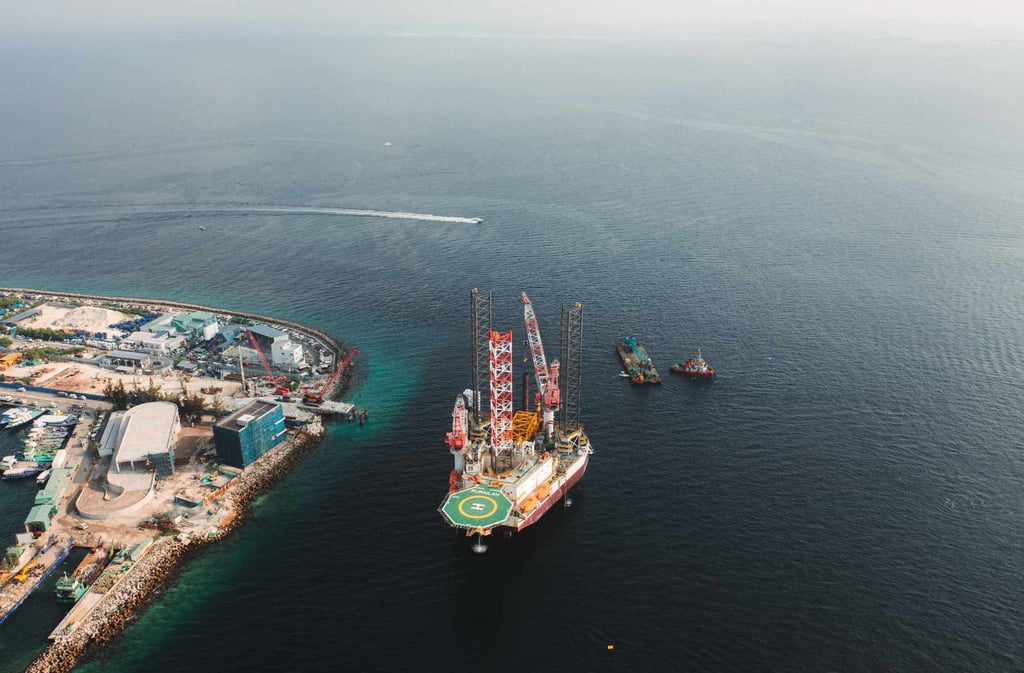What is Deep-Sea Mining: The Next Frontier or Looming Environmental Crisis?
At the expense of greenhouse gas depletion, miles beneath the ocean surface, gambling for resources to provide zero-carbon energy components is raising concern among scientists and environmentalists.


At the expense of greenhouse gas depletion, miles beneath the ocean surface, gambling for resources to provide zero-carbon energy components is raising concern among scientists and environmentalists.
Climate change is one of the most devastating crises happening in the history of mankind. The rise of the unprecedented scale of nature's losses is a result of increasing fossil fuel immersion, deforestation, and metric tons of waste around the world. Enclose billions of people on the brink of climate cataclysm. Recent studies indicate climate change is a global emergency. As of 2022, fossil fuel emissions have escalated to unprecedented degrees. more than 90% of global fossil fuel combustion and industrial processes contribute widely to climate change. While 10% is primarily from deforestation, our global temperature has also shown an irreversible disaster of roughly 2.7 degrees Celsius (°C) peak warning in 2023. Followed by record-breaking sea surface temperature. The hottest northern hemisphere extratropical summer was recorded for the first time in 2000 years. Tragically, this dire situation will only upscale for more upcoming years and will continue to bring forth suffering across the globe. This urgent challenge of climate change forced a possible solution from the deepest part of the sea.
The sea-bed mining.
Ocean holds 25% of all carbon dioxide emissions, absorbing 90% of excess heat globally. And major containers of rare earth minerals essential for the adoption of battery-dependent technologies.
Numerous parties have seen sea-bed mining as a possible solution to combat the extreme usage of fossil fuel emissions. Materials such as copper, cobalt, nickel, zinc, silver, gold, and other rare elements found at the depths of the ocean are aiming as new resources to produce zero-carbon energy.
But what is exactly the process of sea-bed mining?
It is the process of retrieving mineral deposits from the deep ocean floor below 200 meters. The deep-sea mining uses vacuum technology to suck up nodules from the muddy sediment. Targeting polymetallic nodules, potato-sized rocks found over 4,000 meters below the ocean surface. This method, however, does not only extract minerals but poses a threat to organisms living within the sea bed. The current state of deep-sea mining has not been repudiated commercially but is being envisioned to be brought into existence for the next few years. In 2021, the Pacific Island nation of Nauru informed the ISA about its intentions to commence mining in international waters. This action activated a disputed clause in the UN Convention on the Law of the Sea (UNCLOS) called the “two-year rule. ” This rule mandates that commencing two years after the notification date, the ISA is obligated to "review" and "tentatively endorse" mining applications—irrespective of the finalization of regulations. The two-year period came to an end in July 2023, with the ISA's subsequent meeting concluding without a final rule being established.
Currently, the Council is diligently working towards implementing regulations by the year 2025. The ISA Assembly, consisting of all 168 members, will convene throughout 2024. It is expected to explore the possible effects of seabed mining on the marine environment, marking a significant first-time discussion. Some individuals are hopeful that these discussions will result in a "precautionary pause" on mining activities, allowing for additional research to be conducted. However, the likelihood of this happening, as well as the potential outcomes that may arise in the interim, remain uncertain. The mineral-rich region has already attracted interest from 17 deep-sea mining contractors. Their combined exploration areas span around 1 million square kilometers, equivalent to the size of Ethiopia. Last January 2024, Norway began the process of unlocking its own waters for deep-sea mineral exploration, with plans tentatively set to commence in the early 2030s. Other countries might also choose to do the same. Nevertheless, numerous nations may encounter limitations due to insufficient funds and technical expertise. There is a significant variation in viewpoints regarding seabed mining among different countries. Some countries like Norway and Nauru are at the forefront of exploration and extraction efforts; while others such as Germany, Canada, and the European Parliament have advocated for national and regional moratoriums. Moreover, the majority of the most alluring mineral reserves are located not within countries' Exclusive Economic Zones but rather on expansive seafloor abyssal plains in international waters. One area that captivates attention is the Clarion-Clipperton Zone in the vast Pacific Ocean.
What are the impending merits and demerits of the implementation of deep-sea mining?
Deep sea mining poses a possible solution to reduce fossil fuel emissions and stop extreme global heating. The opportunities to revolutionize the materials for technology industries have been shown to cause imperiled damage to biodiversity. The robotic bulldozers that will explore the deep ocean floor, collecting nodules, and transporting them back up to the surface five kilometers above show harmful effects such as landmines, including the formation of sinkholes, depletion of biodiversity, and extensive pollution of soil and surface water. Delicate creatures residing in the depths, such as polychaete worms, sea cucumbers, corals, and squid, would be devastated by dredging. Simultaneously, plumes of sediments containing hazardous metals would rise, swirling upwards to contaminate marine food chains.
The expansion of deep-sea mining remains controversial. Without sufficient research, scientists caution that putting the future of climate action in the hands of deep-sea mining could prove more harmful than beneficial for our planet
Reference and sources:
https://doi.org/10.1093/biosci/biae087
https://www.wri.org/insights/deep-sea-mining-explained
https://www.bbcearth.com/news/deep-sea-mining-a-solution-or-more-trouble-for-our-oceans
